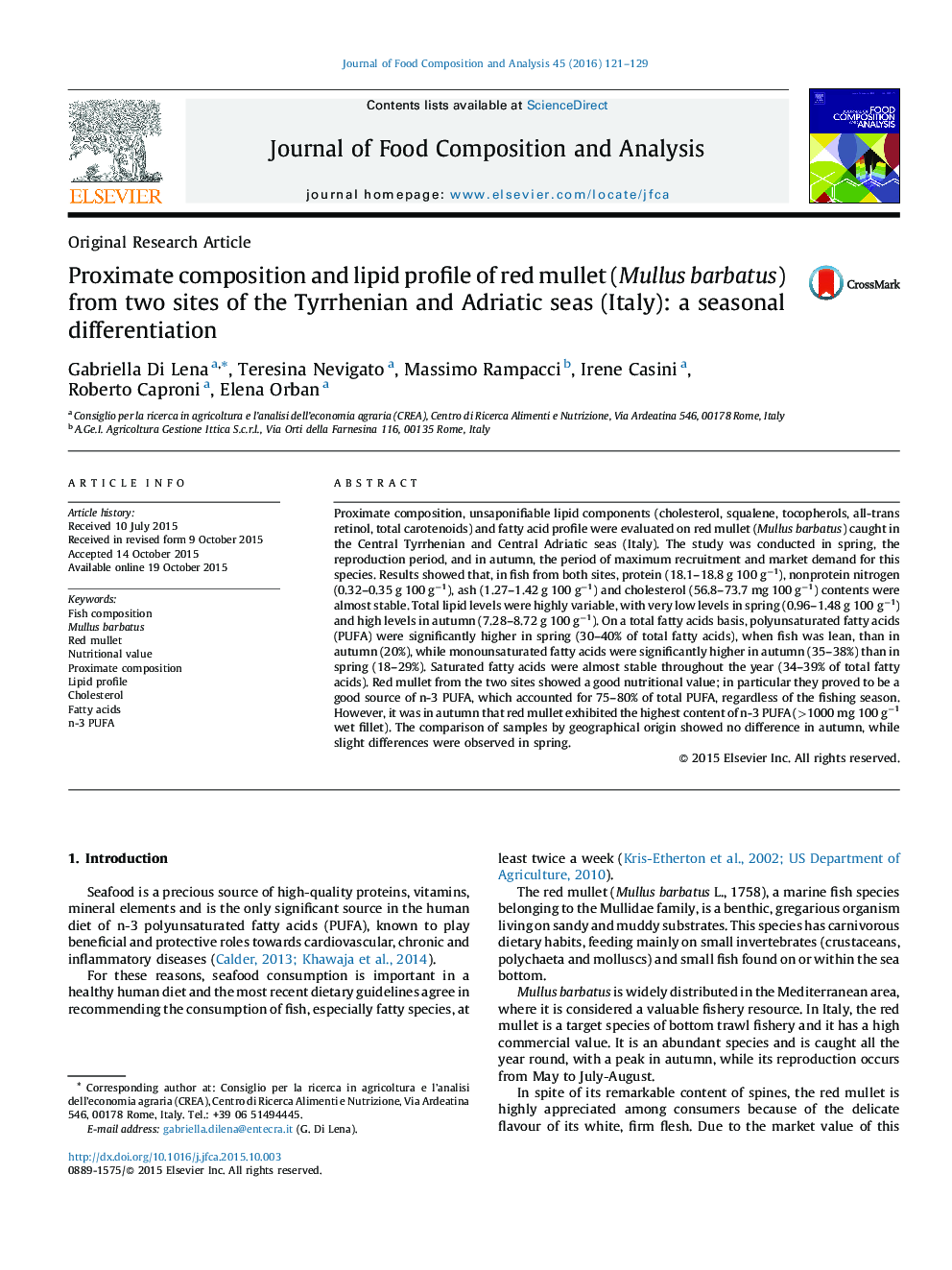| کد مقاله | کد نشریه | سال انتشار | مقاله انگلیسی | نسخه تمام متن |
|---|---|---|---|---|
| 1218186 | 1494497 | 2016 | 9 صفحه PDF | دانلود رایگان |

• The lipid content and profile of red mullet in spring and in autumn differed.
• Total lipid levels were low in spring, the reproductive season, and high in autumn.
• Red mullet from the two sites proved to be a good source of n-3 PUFA.
• Cholesterol levels were low in red mullets from both sites and seasons.
Proximate composition, unsaponifiable lipid components (cholesterol, squalene, tocopherols, all-trans retinol, total carotenoids) and fatty acid profile were evaluated on red mullet (Mullus barbatus) caught in the Central Tyrrhenian and Central Adriatic seas (Italy). The study was conducted in spring, the reproduction period, and in autumn, the period of maximum recruitment and market demand for this species. Results showed that, in fish from both sites, protein (18.1–18.8 g 100 g−1), nonprotein nitrogen (0.32–0.35 g 100 g−1), ash (1.27–1.42 g 100 g−1) and cholesterol (56.8–73.7 mg 100 g−1) contents were almost stable. Total lipid levels were highly variable, with very low levels in spring (0.96–1.48 g 100 g−1) and high levels in autumn (7.28–8.72 g 100 g−1). On a total fatty acids basis, polyunsaturated fatty acids (PUFA) were significantly higher in spring (30–40% of total fatty acids), when fish was lean, than in autumn (20%), while monounsaturated fatty acids were significantly higher in autumn (35–38%) than in spring (18–29%). Saturated fatty acids were almost stable throughout the year (34–39% of total fatty acids). Red mullet from the two sites showed a good nutritional value; in particular they proved to be a good source of n-3 PUFA, which accounted for 75–80% of total PUFA, regardless of the fishing season. However, it was in autumn that red mullet exhibited the highest content of n-3 PUFA (>1000 mg 100 g−1 wet fillet). The comparison of samples by geographical origin showed no difference in autumn, while slight differences were observed in spring.
Journal: Journal of Food Composition and Analysis - Volume 45, February 2016, Pages 121–129